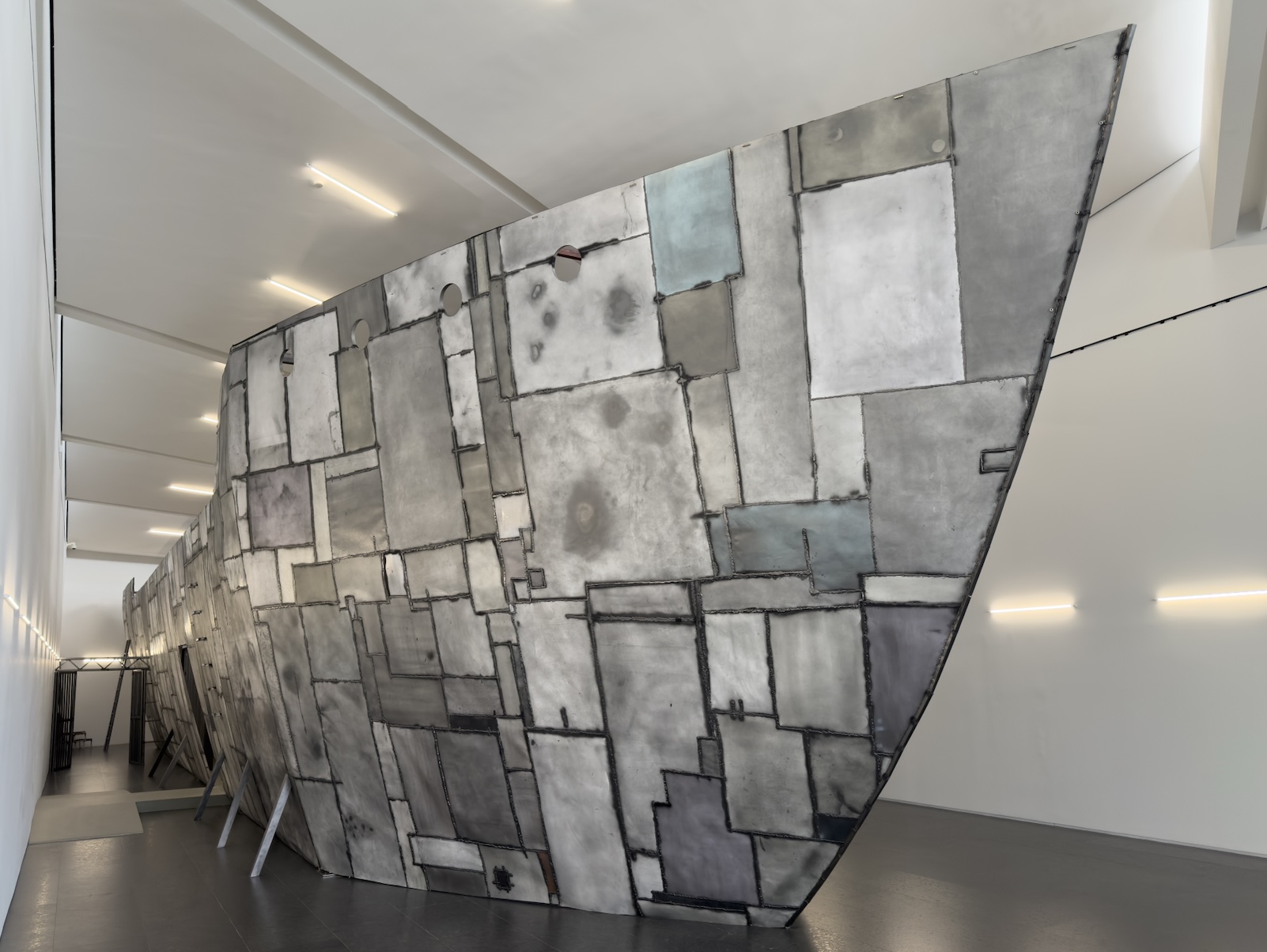
Review
Temporal Ventaja: Mauro Giaconi at Arte Abierto
by Constanza Ontiveros Valdés
Reading time
5 min
What happens if we surrender to illusion—to suspicion itself? Temporal Ventaja [Temporal Advantage] is an imposing vessel that conceals illusions mainly built with the most elemental resources of drawing: graphite and paper. The new project by Argentine artist Mauro Giaconi, presented at Arte Abierto—a cultural space located inside a shopping mall in southern Mexico City—unfolds as a sensorial stage. Within it, multiple layers of meaning emerge, both social and deeply personal, questioning our strategies of defense and our unsustainable capacity for denial.
In this immersive installation, Giaconi continues his exploration of drawing as line, object, and existential metaphor—a practice that has long expanded the spatial and narrative limits of the medium. This three-dimensional approach also connects to his background in architecture, a discipline he studied before turning to visual art. “Drawing is a way of thinking,” says the artist. That idea materializes in Temporal Ventaja: what at first appears to be a large-scale metallic ship is, in fact, a collage of reused papers—rich in texture, tinted with graphite dust, and assembled like an immense puzzle using industrial silicone. Giaconi describes it as “an exercise in transformation: a space within a space; a monster within another, larger one,” alluding to the bustling mall that houses it.
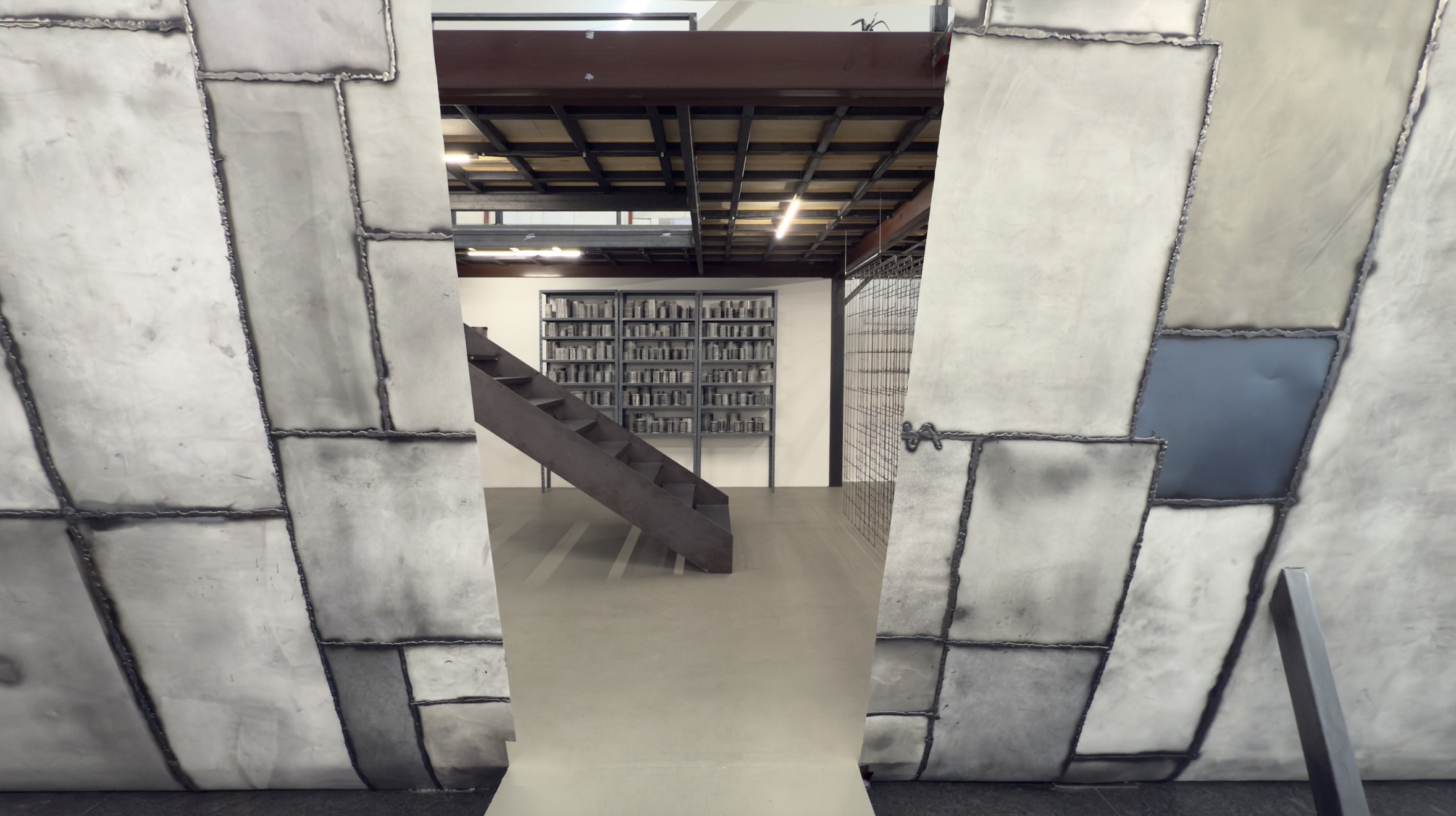
Each step through the installation evokes curiosity and wonder, but also a quiet unease. Giaconi recalls that one inspiration for the project was a boat trip to Uruguay to visit his family after the dictatorship. Another influence was his time in Solentiname, Nicaragua (2021), where he intervened two real-life boats using geometric camouflage patterns developed during World War II to protect the battleships. Yet here, something far more intimate surfaces: a perpetual act of pretending, a rigid exterior concealing fragility—a void. Temporal Ventaja seems to drift between illusion and memory, between personal references that reveal universal truths, exposing the vulnerability we struggle so hard to conceal. “The human species is one of the few that camouflages from itself,” reads the exhibition text, written by Giaconi.
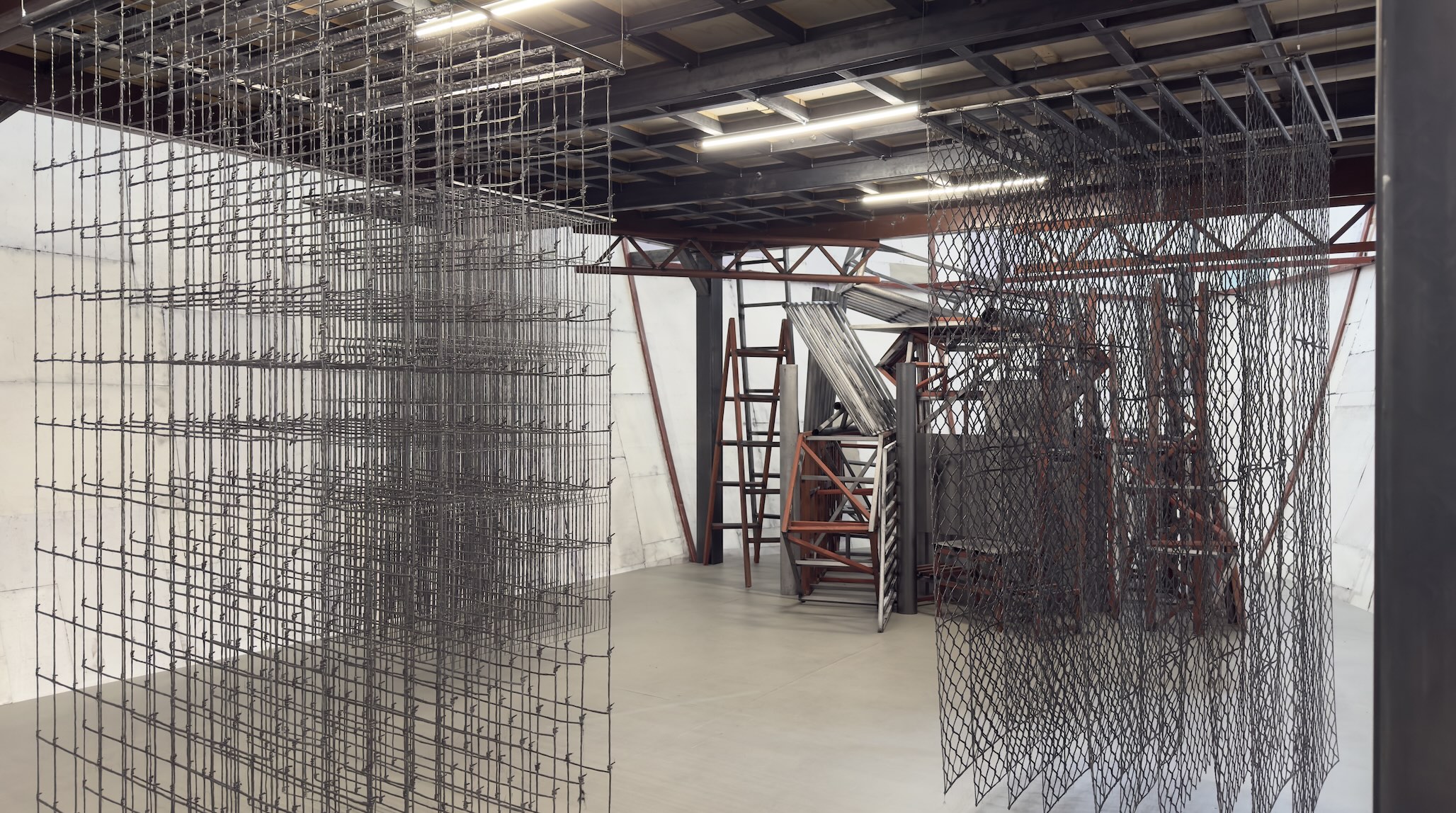
Along the monumental exterior drawing, the interior unfolds across two levels populated by simulated objects that shelter and isolate visitors from the outside rush. Some, like bunk beds or tin cans made of paper, allude to elements found aboard a warship. The silicone meshes—evoking aluminum and recurring throughout Giaconi’s work—suggest boundaries, barriers. To these, he adds multisensory elements such as metal pots (in contrast to the paper imitations) that appear to be boiling, though they only emit a faint vapor. Through these illusions, Giaconi offers fleeting clues—glimpses of meaning—reminding us that everything is far more than what the eye perceives.
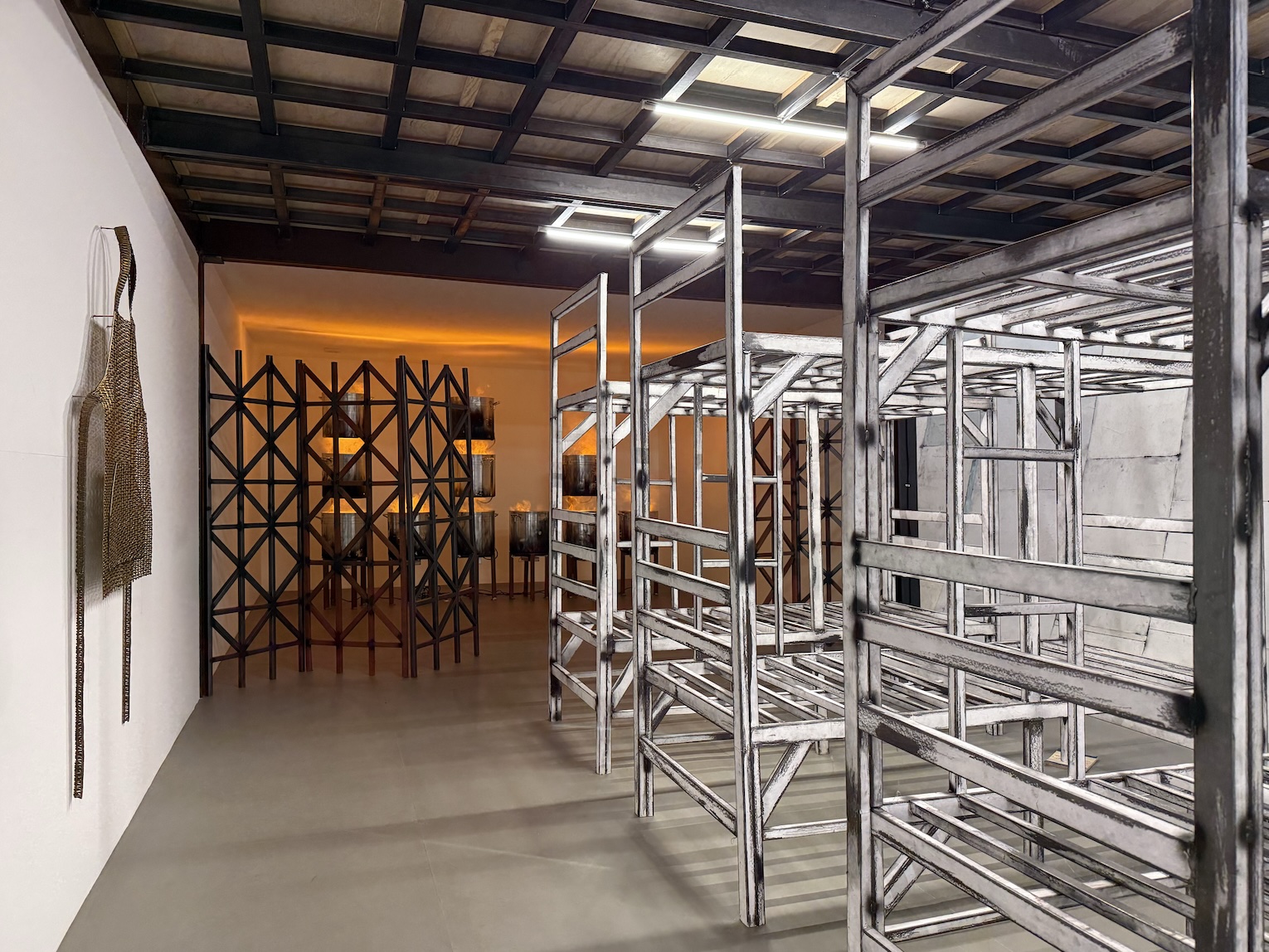
As in previous projects, Giaconi draws upon Jean Baudrillard’s theory of the simulacrum, where representation no longer reflects reality but replaces it. “Temporal Ventaja is the duration of illusion’s power to reverse reality,” the artist explains. Yet the true force of the work lies in the immediacy of its sensorial activation—in the technical mastery that enables play and wonder. This concern also aligns with Giaconi’s community-oriented projects, such as Obrera Centro, and with the inclusive, open spirit of Arte Abierto itself.
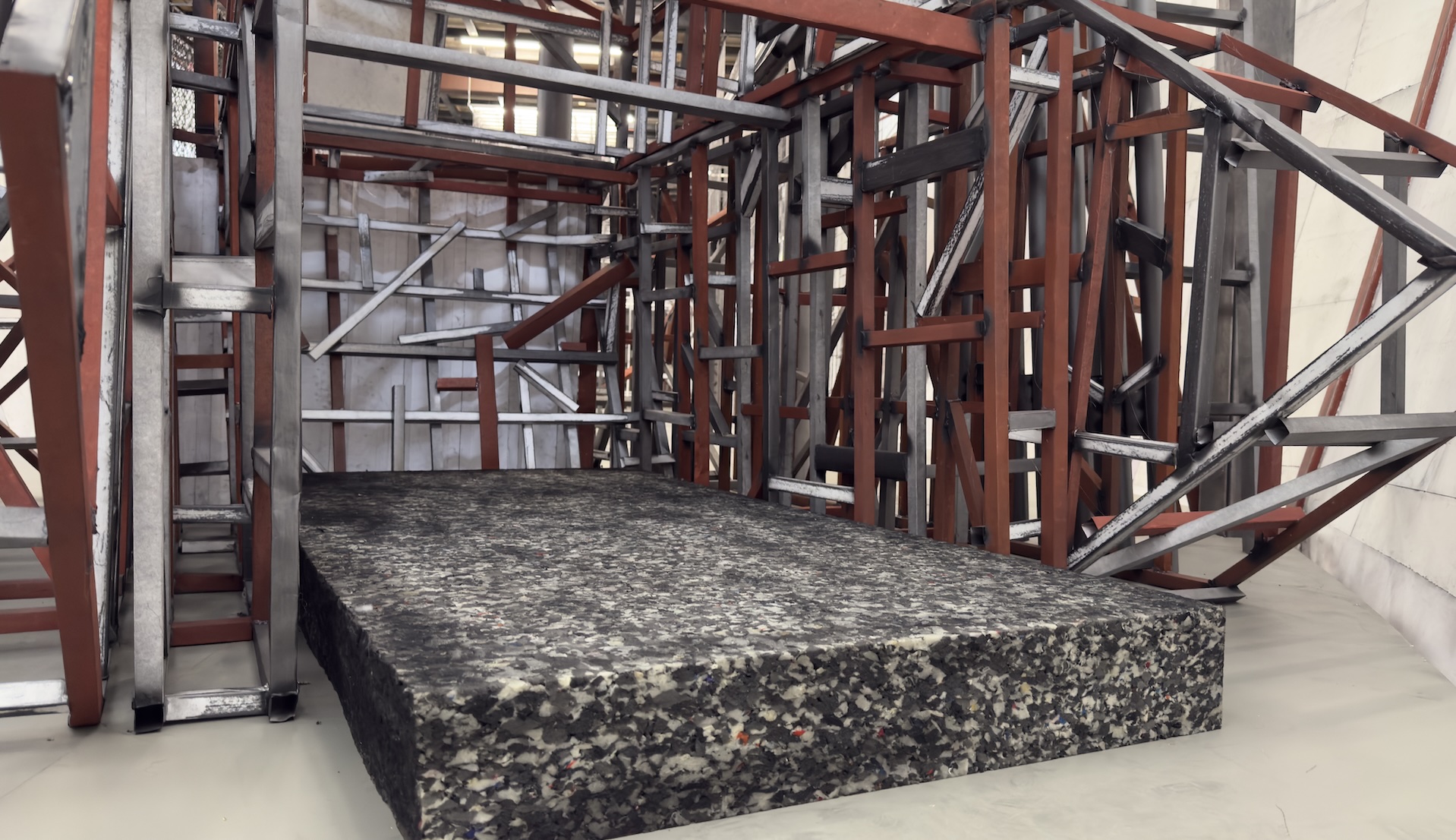
Though most of the objects appear nearly flawless, subtle details reveal traces of process—though even this, perhaps, is another layer of simulation. Inside, a deliberate arrangement of seemingly metallic forms scattered across the floor conceals a resting space—a moment of respite within the chaos. Outside, scaffolding suggests a fictional process of construction, a fragile structure sustained by equally fragile means. Giaconi has explored similar motifs before, as in Un poco con tus ojos (2023), yet here they acquire new resonance as part of the ship that dominates the exhibition space.
The second level introduces another dimension of inquiry. A milpa—where machetes bent into the shapes of plants are painted by Mexican artist Marcos Castro—embodies the duality of harvest and life, nature and destruction. Everything seems to coexist in calm, as it often does in reality.
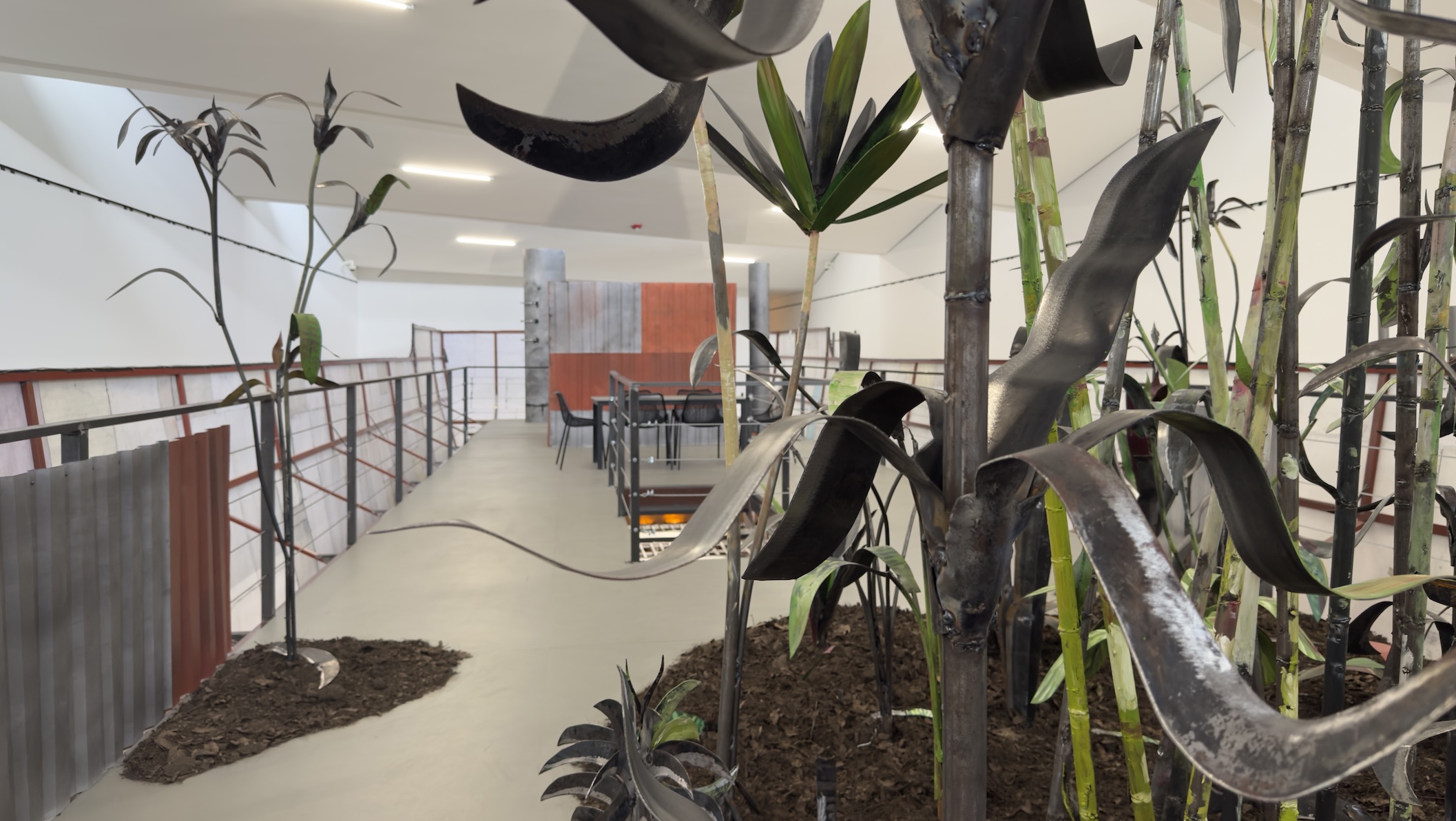
The work’s monumental scale, as well as its minute details, radiate a sense of freedom that carries technical challenges of its own. Beyond the complexity of construction achieved by Giaconi and his team, light plays a crucial role in sustaining the illusion. Technique here is not merely precision—it is a continual unfolding of the creative process. Shortly before the opening, Giaconi added one final touch inside the ship: a silicone apron, a quiet reaffirmation of presence—of the artist’s hand.
Along with the reflections that it inspires, Temporal Ventaja is an invitation to remain present—to look and explore the space several times. Each visit reveals a new detail, a new doubt, uncovering what lies hidden in this poetic, uncertain voyage. As Giaconi puts it: “May looking and suspecting become a little more alike.”
— Constanza Ontiveros Valdés
Translated to English by Luis Sokol
Published on October 24 2025